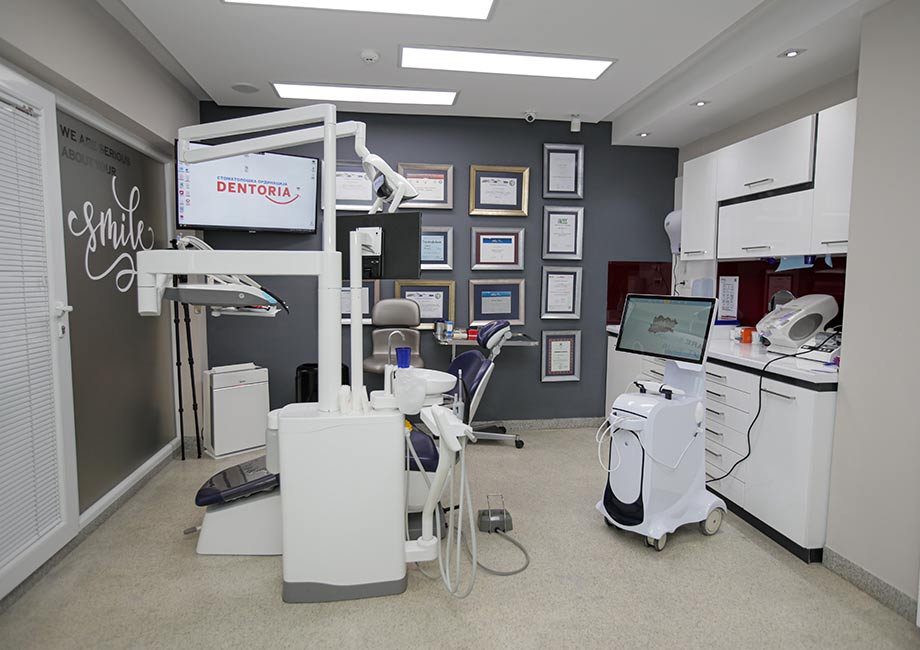
Tooth extraction
In certain clinical cases, in the presence of periapical diseases (in the area of the top of the tooth root), odontogenic infections (infections caused by the teeth), unfavorable fractures of the teeth or for orthodontic and prosthetic reasons, extraction or removal of the teeth is necessary. It is a procedure that is performed under local plexus or conduction anesthesia and the use of appropriate instruments such as: forceps, levers and curettes, etc. Extraction can be ordinary, atypical (with separation - separation of the roots, most often in the case of fractures) and operative. Many times after tooth extraction at 'Dentoria' we also recommend the placement of artificial bone and collagen membrane in order to preserve the bone at the desired level and to provide good bone for the dental implant or, alternatively, so that a dental implant can be placed immediately after tooth extraction. That's why at Dentoria we have a computer tomography system that allows us to see the bone in 3D and plan how to place the dental implant.
Note: after tooth extraction, the diet during that day should be cold and mushy, smoking is not recommended, sleeping should be on the opposite side of the face and if pain occurs, an analgesic can be taken, but not aspirin or andol, as they cause bleeding. In the event of any complications, be sure to contact your primary dentist.
Alveolite
Alveolitis is one of the most common complications after tooth extraction. It appears two or three days after the tooth is extracted and is accompanied by very severe pain, which cannot be relieved with analgesics. In alveolitis, a clot does not form in the alveolus where the tooth was located, and therefore the wound cannot heal.
The reasons for this can be: infection, trauma, allergy, impaired nutrition of the alveoli, increase in factors that break down the coagulum, stress, hormonal disorders and especially often, smoking. It occurs more often in the lower jaw, due to the fibrinolytic effect of saliva.
Alveolitis must be treated exclusively by your dentist. Taking antibiotics is not recommended, as they will not help relieve the pain. The treatment is performed under local anesthesia, during which the wound is rinsed, curettage is performed to stimulate bleeding, and then a suitable dressing is placed in the wound, which will stimulate healing. The dressing must be removed over several visits until the wound is completely healed.